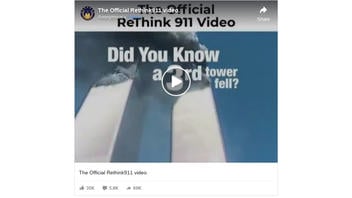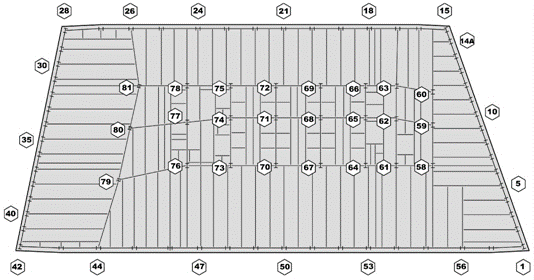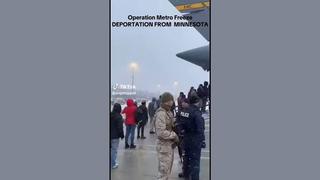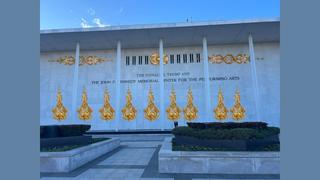
Did World Trade Center Building 7 (WTC 7) collapse due to a controlled explosion right after the collapse of the first two World Trade Center buildings in New York City on September 11, 2001? No, that's not true: Investigators found no evidence of such an explosion and specialists found it was caused by fire. All the World Trade Center buildings shared a sprinkler system. When the first two buildings went down, the sprinkler system was then cut off from the remaining buildings. Debris from the attack on the first two World Trade Center buildings started fires in WTC7. Unchecked fires caused the building to warp and collapse hours after the initial attack.
The claim appeared in a Facebook post (archived here) where it was published on September 9, 2021. The video was captioned, "The Official ReThink 911 video". The video on the post opened with:
Did you know that a third tower fell on 9/11? At approximately 5:20 PM on September 11th, 2001, World Trade Center Building 7 collapsed in 6.5 seconds from normal office fires, according to the government's final report.
This is what the post looked like on Facebook at the time of writing:
(Source: Facebook screenshot taken on Tue Oct 5 14:33:21 2021 UTC)
The almost six-minute video has interviews with numerous physicists and engineers saying they didn't believe an office fire caused the free-fall collapse of Building 7. Many of the people in the video said that there had to have been a controlled demolition or explosives nearby to cause this kind of collapse.
In response, Jonathan Griffin, a public affairs officer who handles buildings and fire inquiries to the National Institute of Standards and Technology (NIST), sent Lead Stories a FAQ list about the World Trade Center Building 7 investigation. NIST, a non-regulatory agency of the Department of Commerce, operates a physical science laboratory that specializes in development of technologies of measurement and engineering standards that make materials and structures safer.
FIRE QUESTIONS
Question 8 on NIST's FAQ list asks, "What caused the fires in WTC 7?" The NIST says that the debris from the collapse of WTC 1 ignited fires. The fires then grew because the sprinkler system and the city's water supply system had both failed to turn on and douse the fires. The fires then spread to WTC 7 and deformed structural supports, which led to it collapsing.
Question 9 on NIST's FAQ list asks, "How did the fires cause WTC 7 to collapse?" The NIST answers that the heat from the fires caused beams and girders in the building to expand, therefore creating a chain reaction that caused an extremely important column to fall. Diagram 1 (see below) is a typical WTC 7 floor. The numbered lines are columns. The collapse of column 79 led the rest of WTC 7 to free fall.
Credit: NIST
CONSPIRACY THEORIES
Question 32 on NIST's FAQ list asks, "In a video, it appears that WTC 7 is descending in free fall, something that would not occur in the structural collapse that you describe. How can NIST ignore basic laws of physics?" NIST answered that in the draft WTC 7 report (released Aug. 21, 2008). NIST stated that the fall of WTC 7 happened in three stages. Stage 1 was the building falling slower than free fall, Stage 2, the building was in free fall, and Stage 3 was, again, the building falling slower than free fall. Timing the fall of each of these stages was done by tracking the brightness of a pixel as the building fell onto itself and other numerical analyses.
Question 33 asks, "Did investigators consider the possibility that an explosion caused or contributed to the collapse of WTC 7?" NIST explains that yes, that possibility was considered, however, there was no evidence of a "blast event."
There is also a final report of the WTC 7 draft available for anyone to read.
Popular Mechanics, a magazine and website that explains the mechanics of the world around us, debunks conspiracy theories about this very claim in their 2017 article, "World Trade Center 7 Report Puts 9/11 Conspiracy Theory to Rest".
PROFESSOR BARZIN MOBASHER
Barzin Mobasher, a construction materials and steel structures expert who is professor at the School of Sustainable Engineering and the Built Environment at Arizona State University said. In an October 8, 2021 email to lead Stories, Mobasher said the video in this Facebook post is a classic example of a single factoid being used as the sole dominant parameter in arriving at a wrong conclusion about a complicated problem. Lead Stories has edited his answer lightly placing words in parenthesis to correct typos.
It is quite easy to use facts to draw wrong conclusions and that is why everything must be addressed.
As the fire burned and grew for the next 5-6 hours there were heating and buckling of individual components (that) slowly, but surely the individual failure reduced all the safety factors that were there. I am very familiar with the finite element method used on the simulation, and believe me when I say that these are not artist's rendering. These are all related to stresses and (strains) and deformations.
The collapse in 5-6 seconds is expected. This is the way gravity works. Last year we had a 120-year old railroad bridge collapse in Phoenix in 4 seconds after a train hit one essential component. NIST did the investigation and videos of it are shown with a single spark at the probable point of impact. When a critical structure is removed, (and) no more load distribution takes place, total collapse is imminent.
Mobasher wrote, in his email to Lead Stories, that the NIST gives five conclusions in accordance with the fire causing the collapse:
- long-span floor systems which experience significant thermal expansion and sagging effects,
- connection designs (especially shear connections) that cannot accommodate thermal effects,
- floor framing that induces asymmetric thermally-induced (i.e., net lateral) forces on girders,
- shear studs that could fail due to differential thermal expansion in composite floor systems,
- and lack of shear studs on girders.
Moshaber wrote that in his opinion, the long-span floor systems which expanded and sagged was the most significant structural weakness.



















